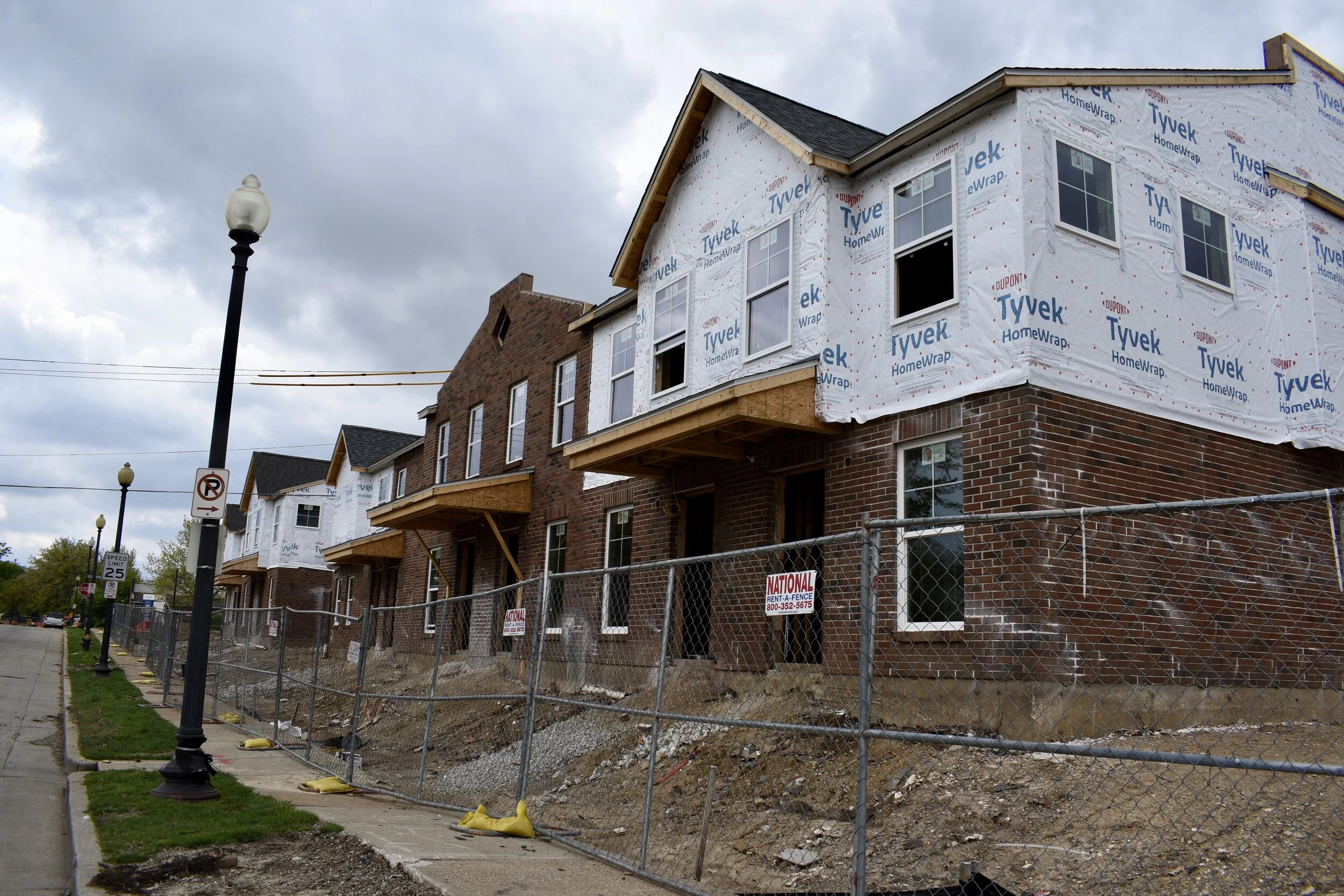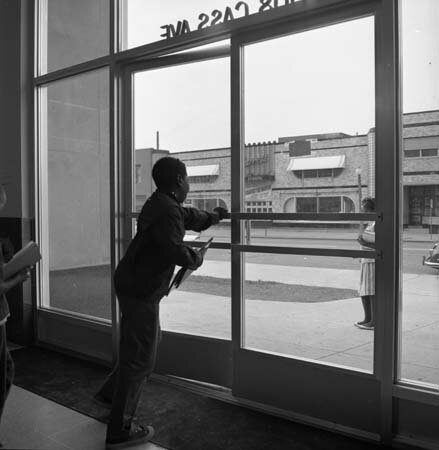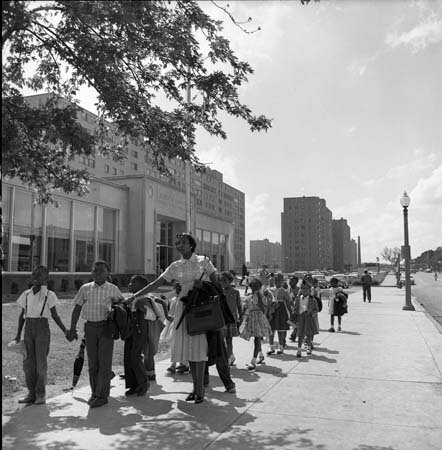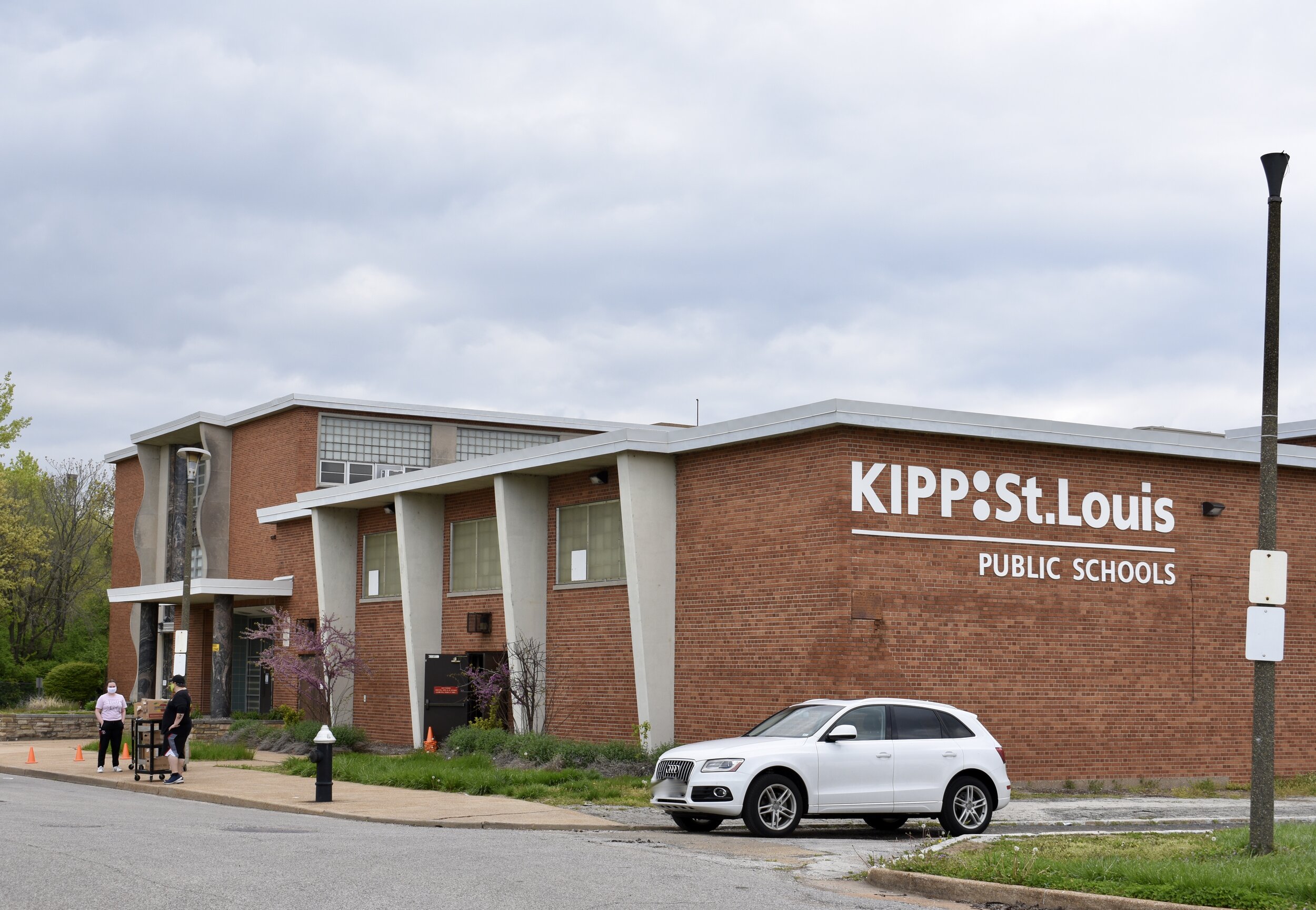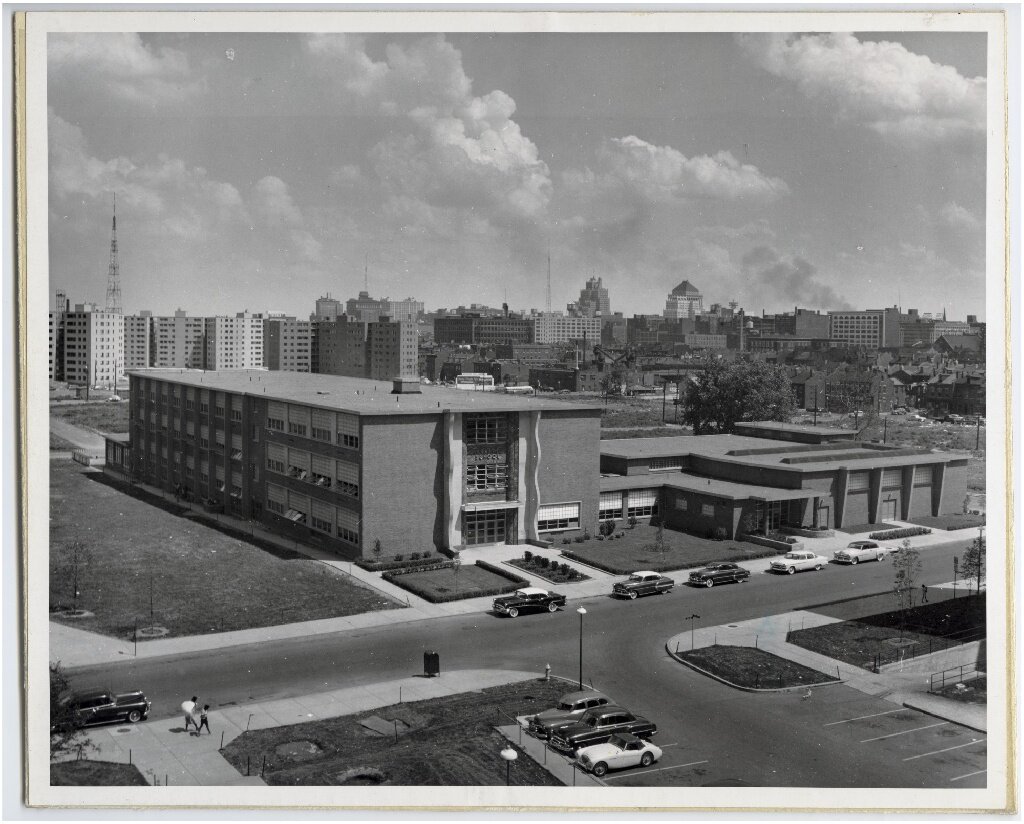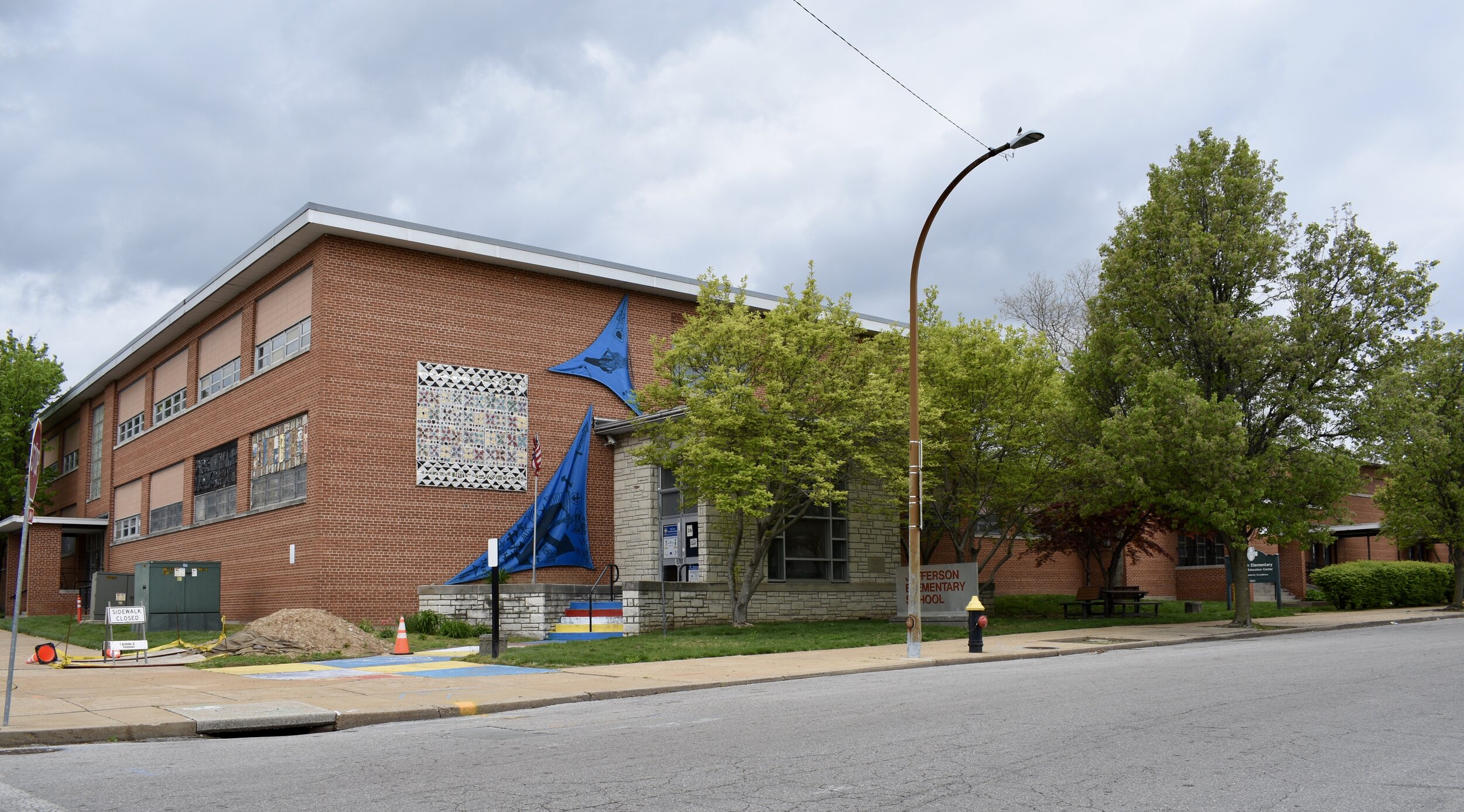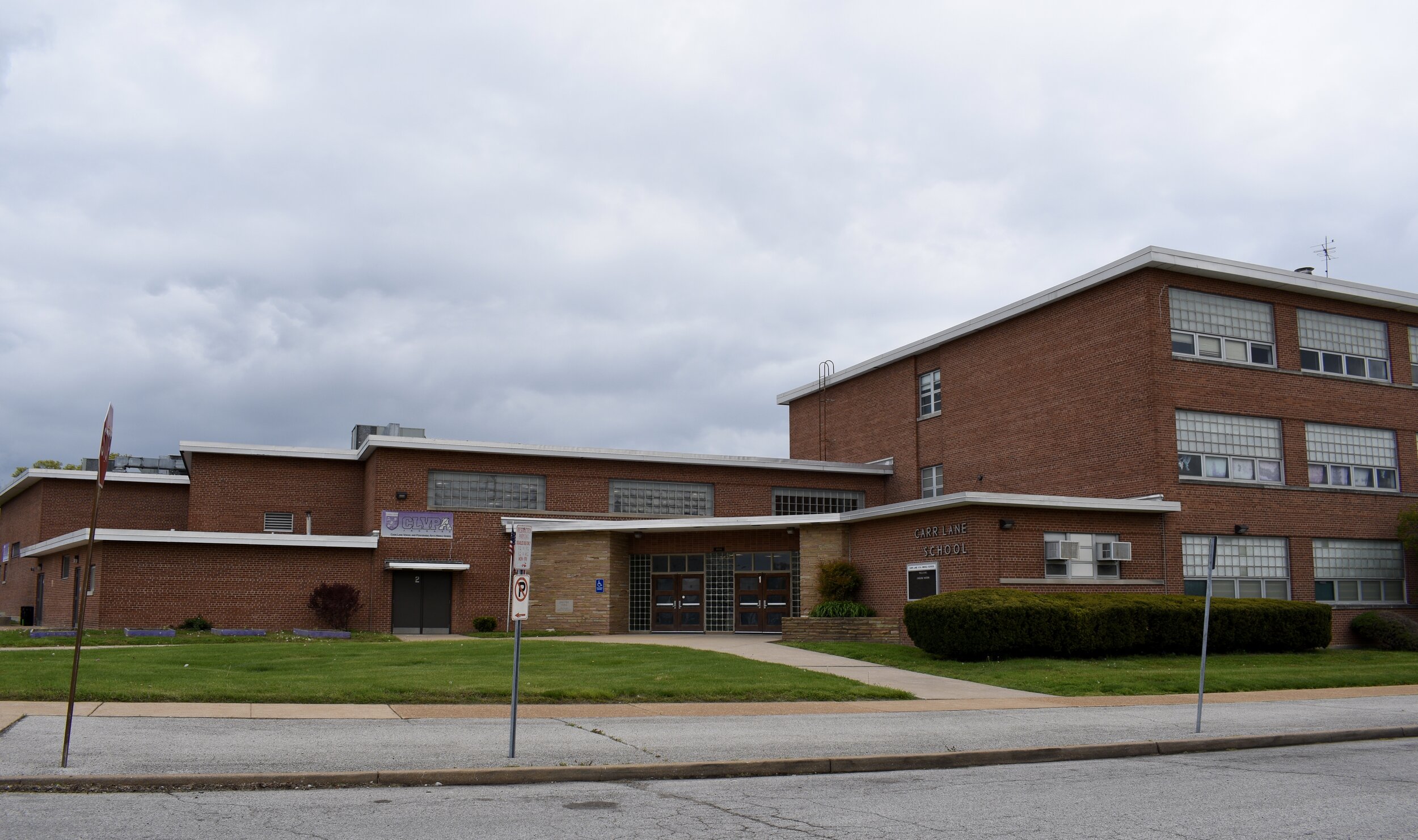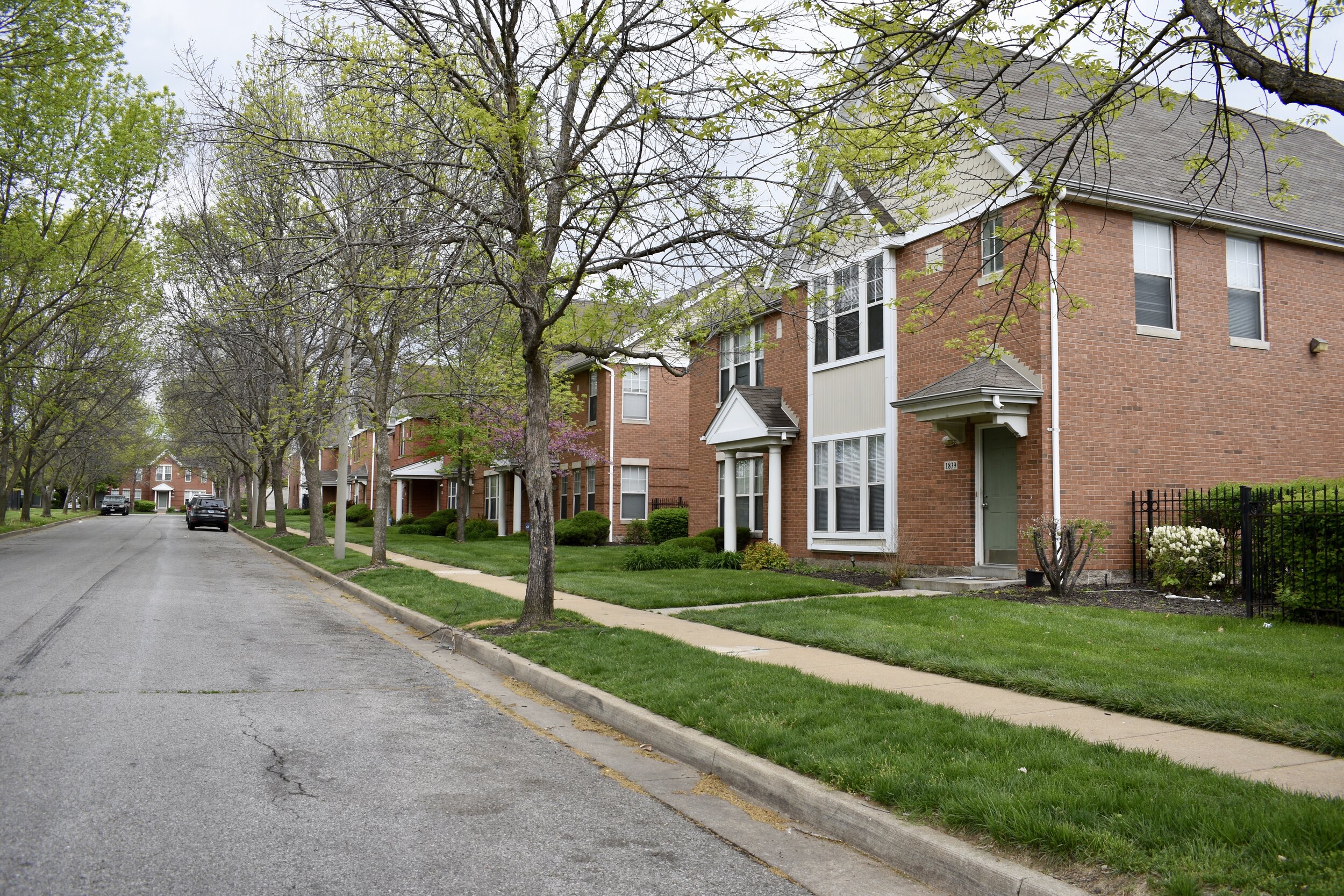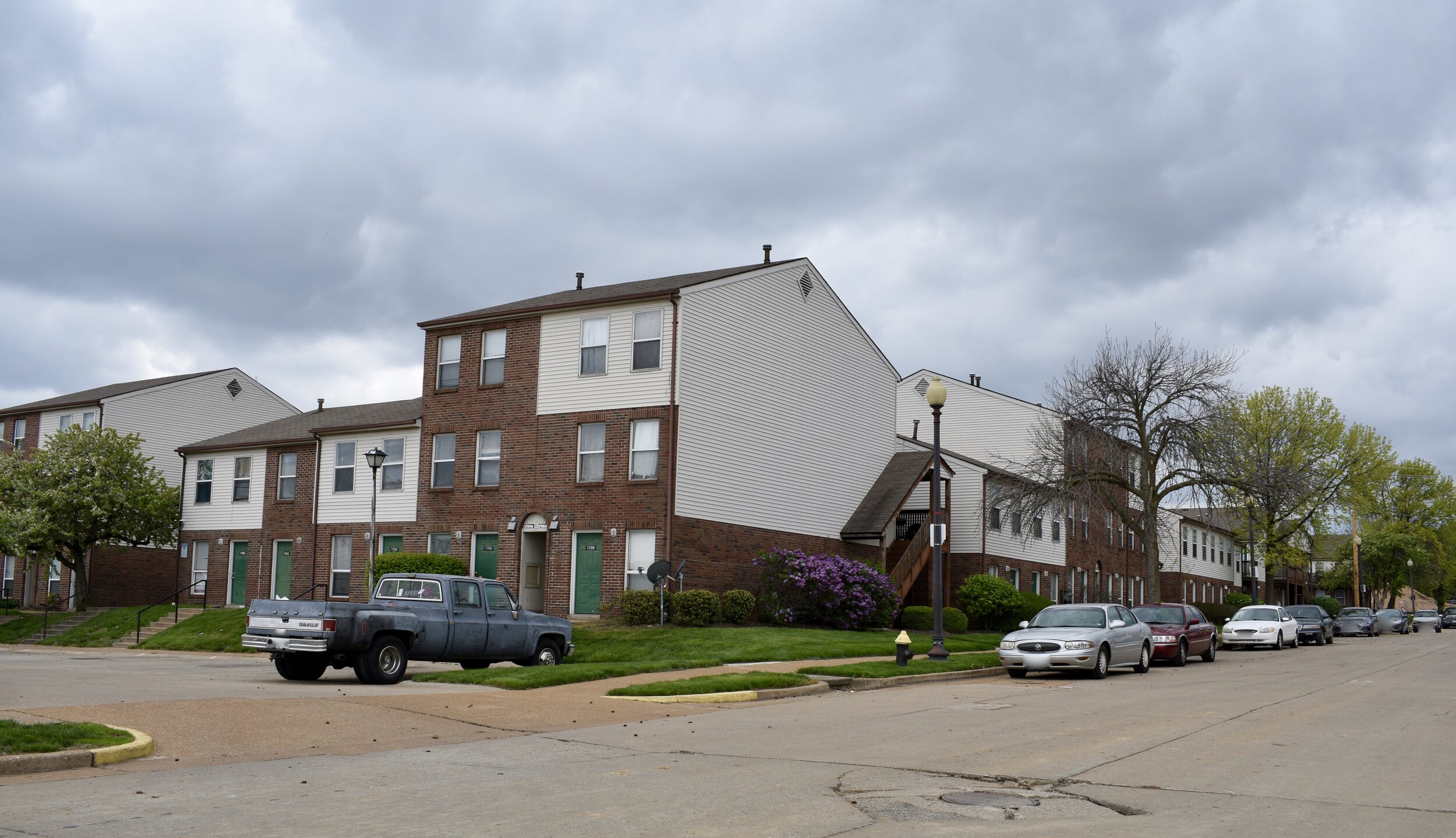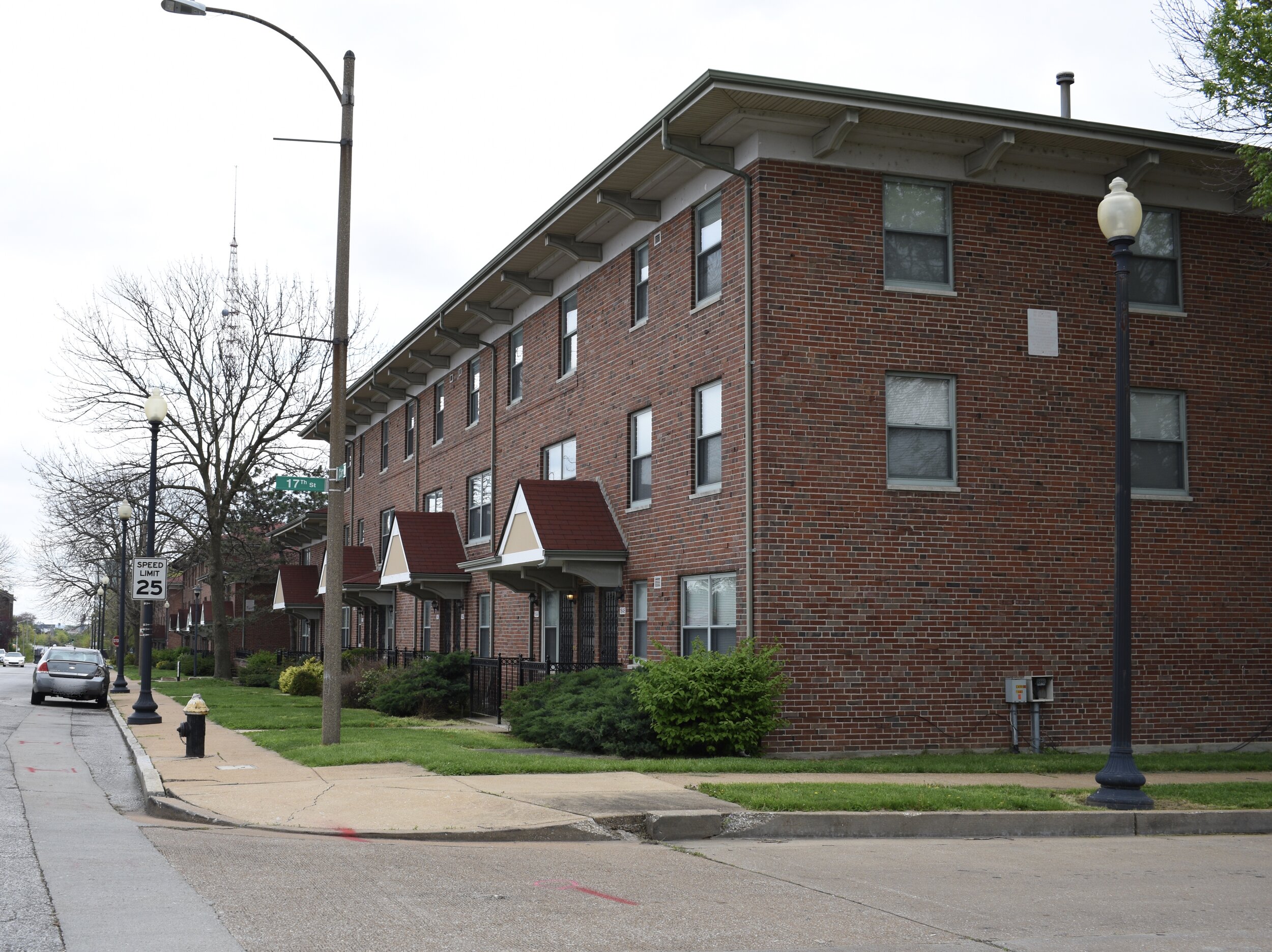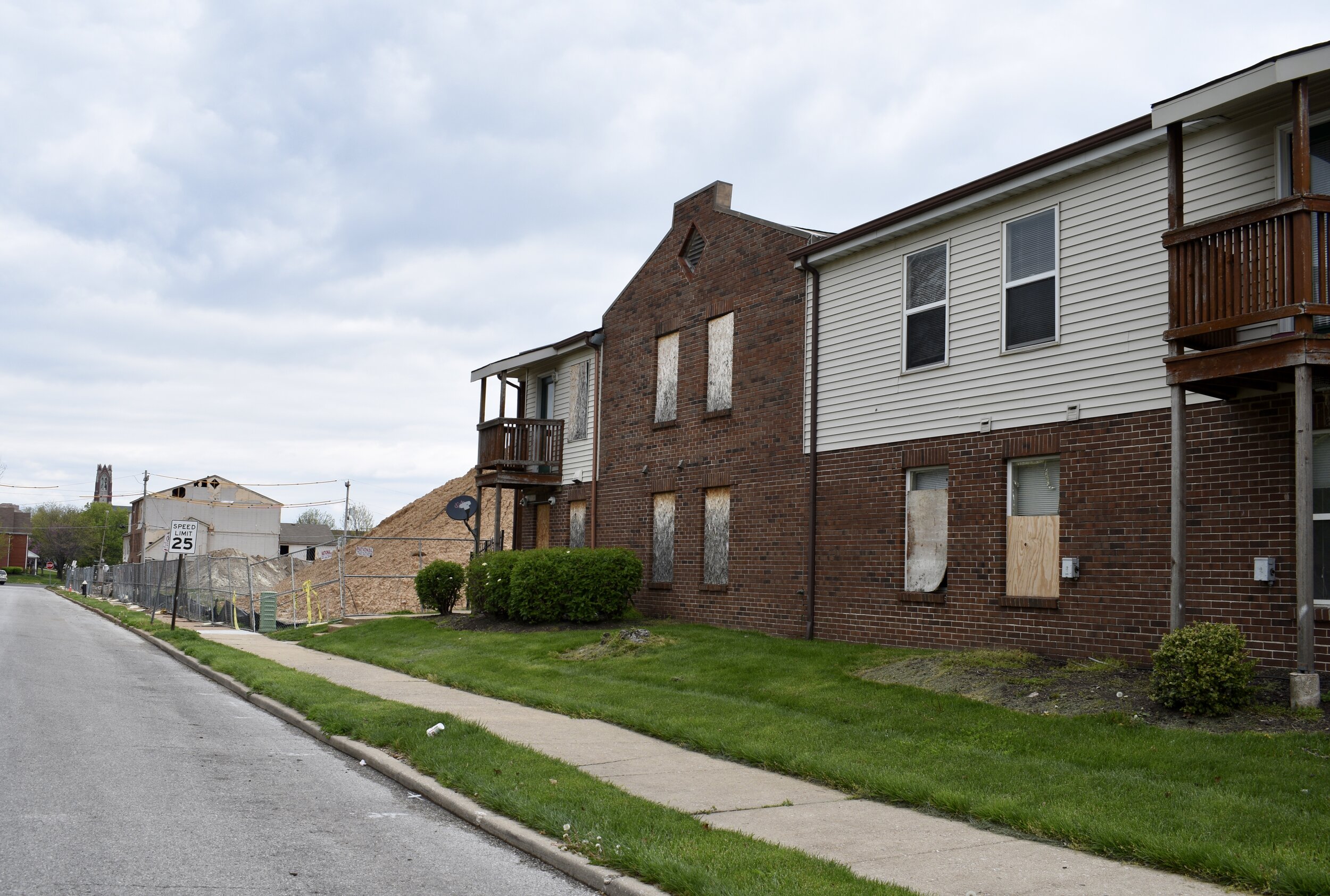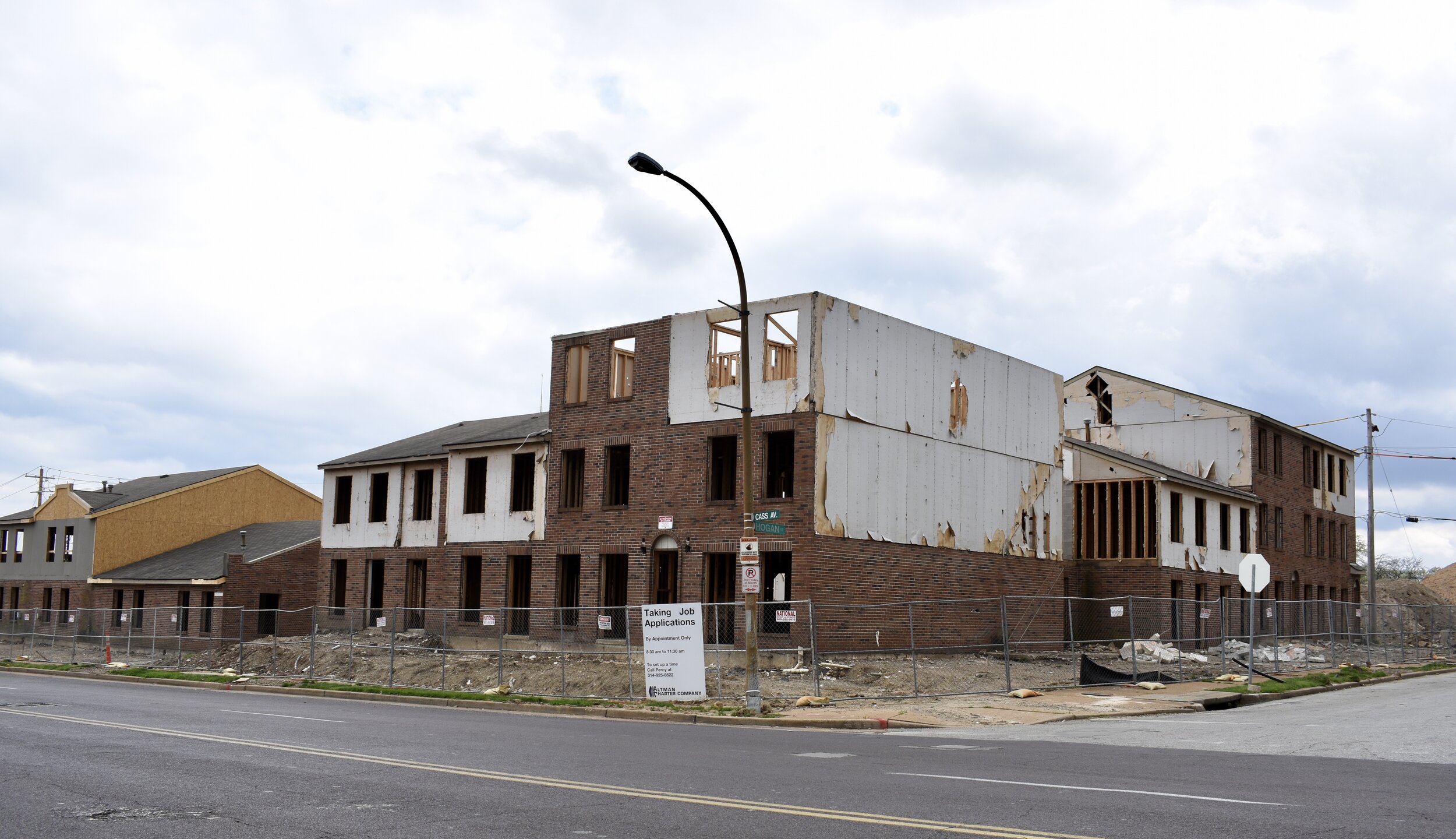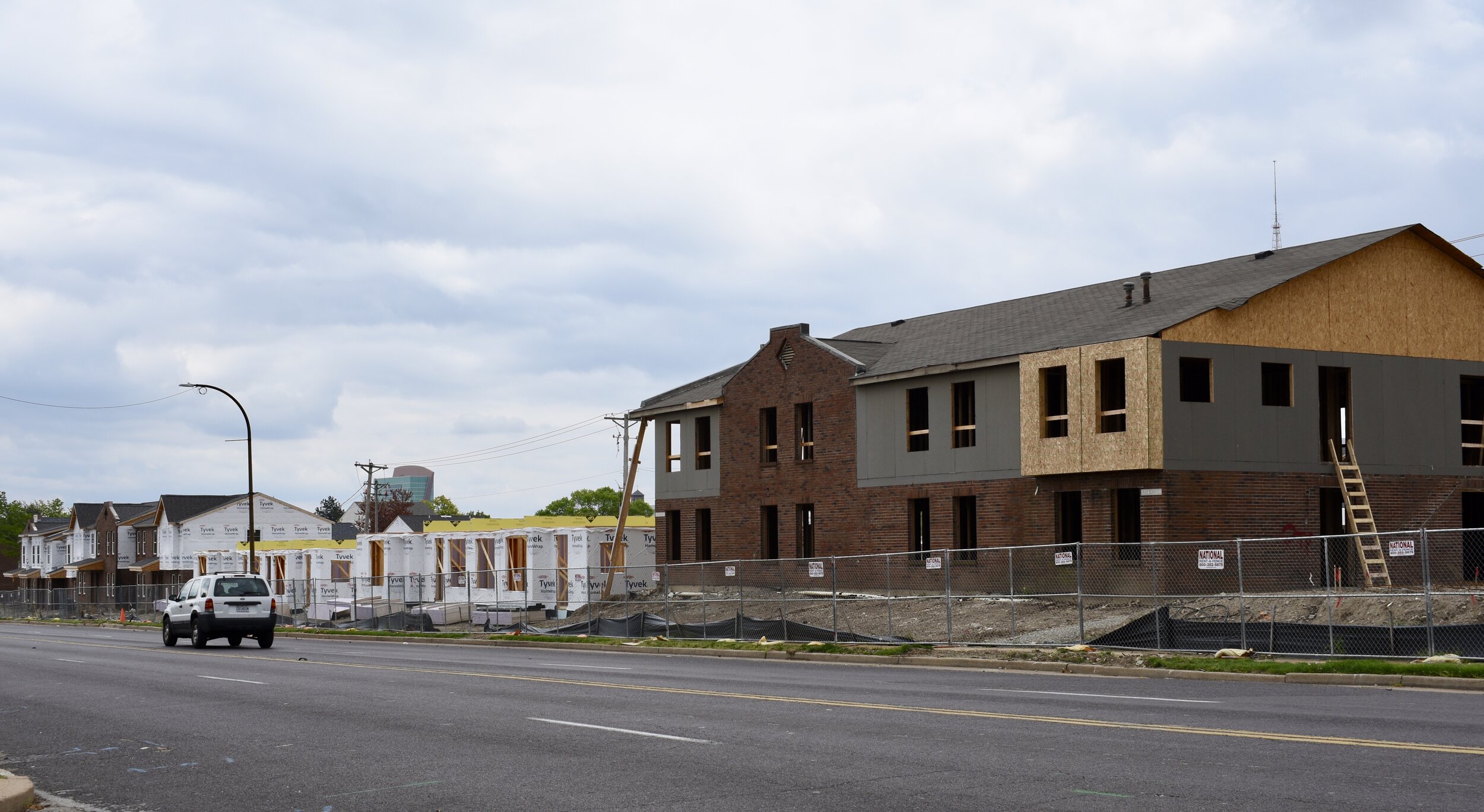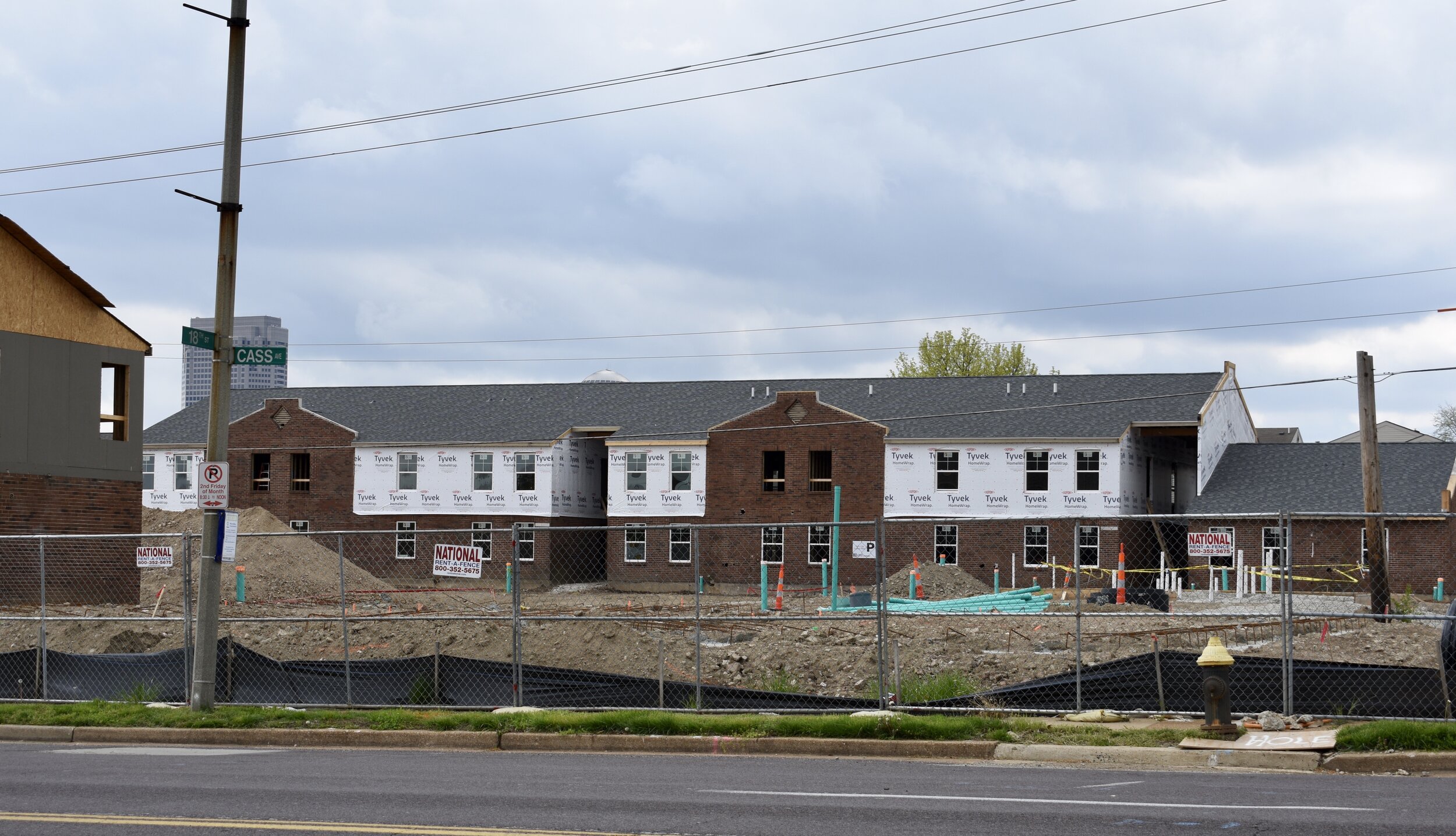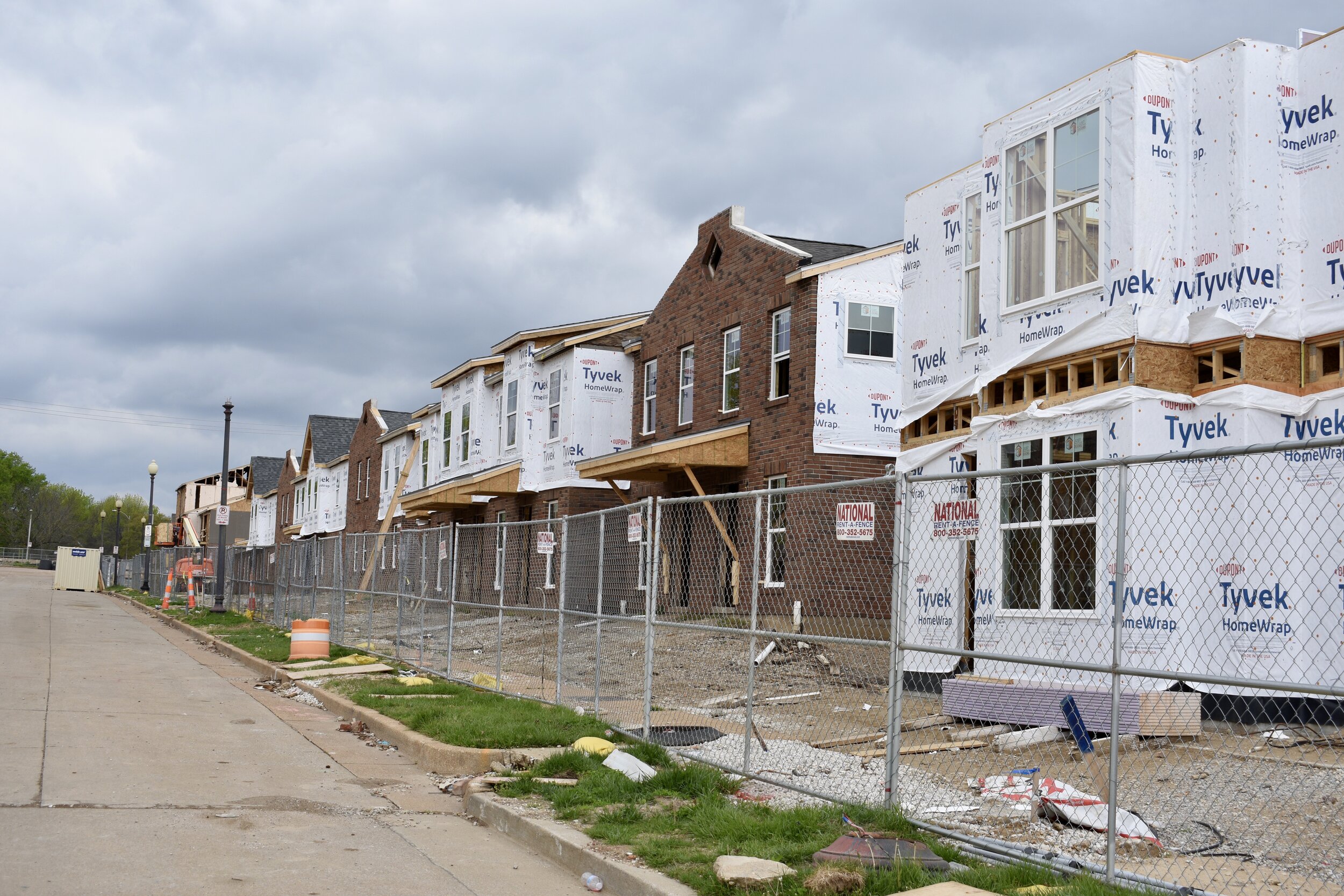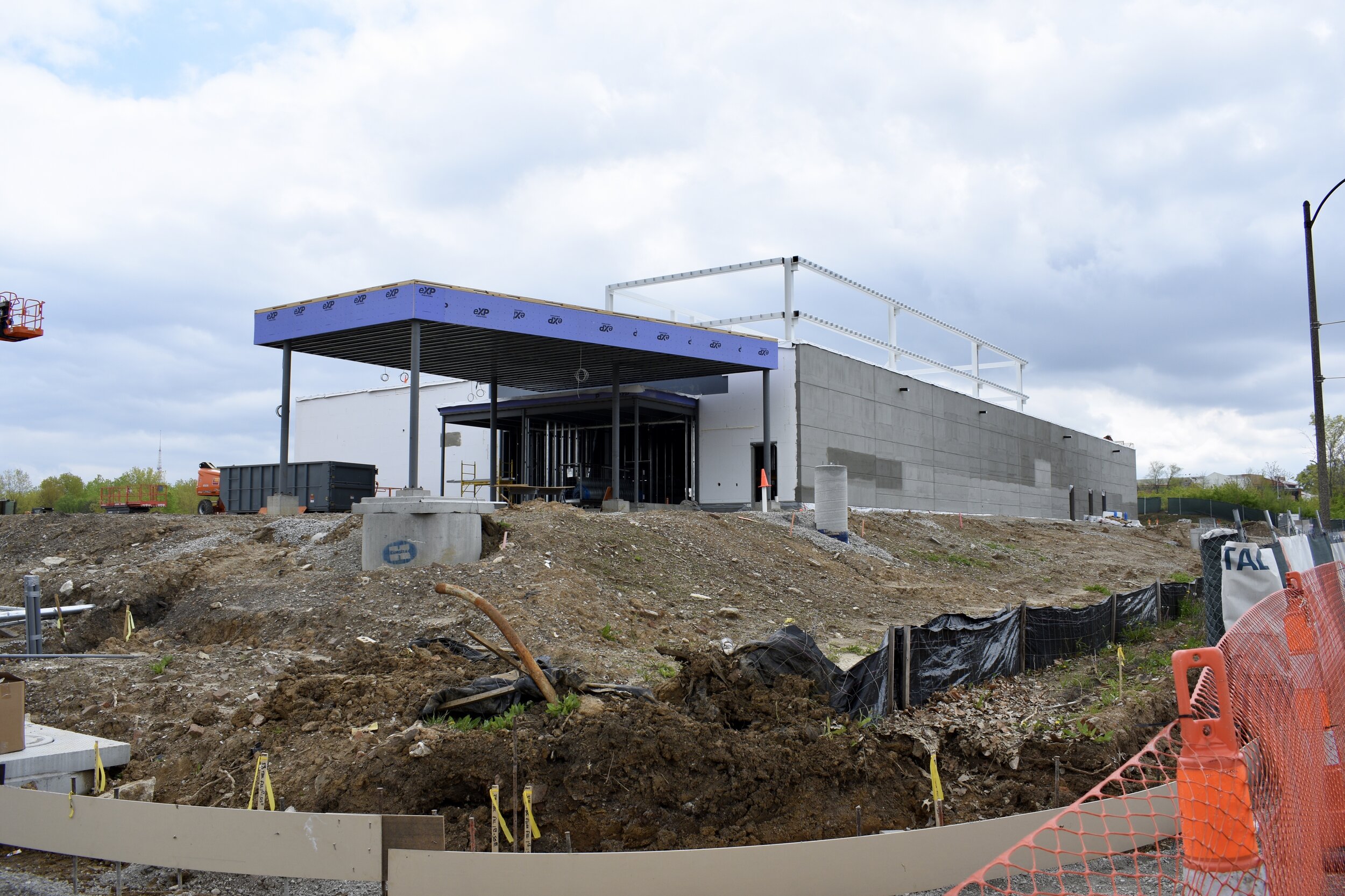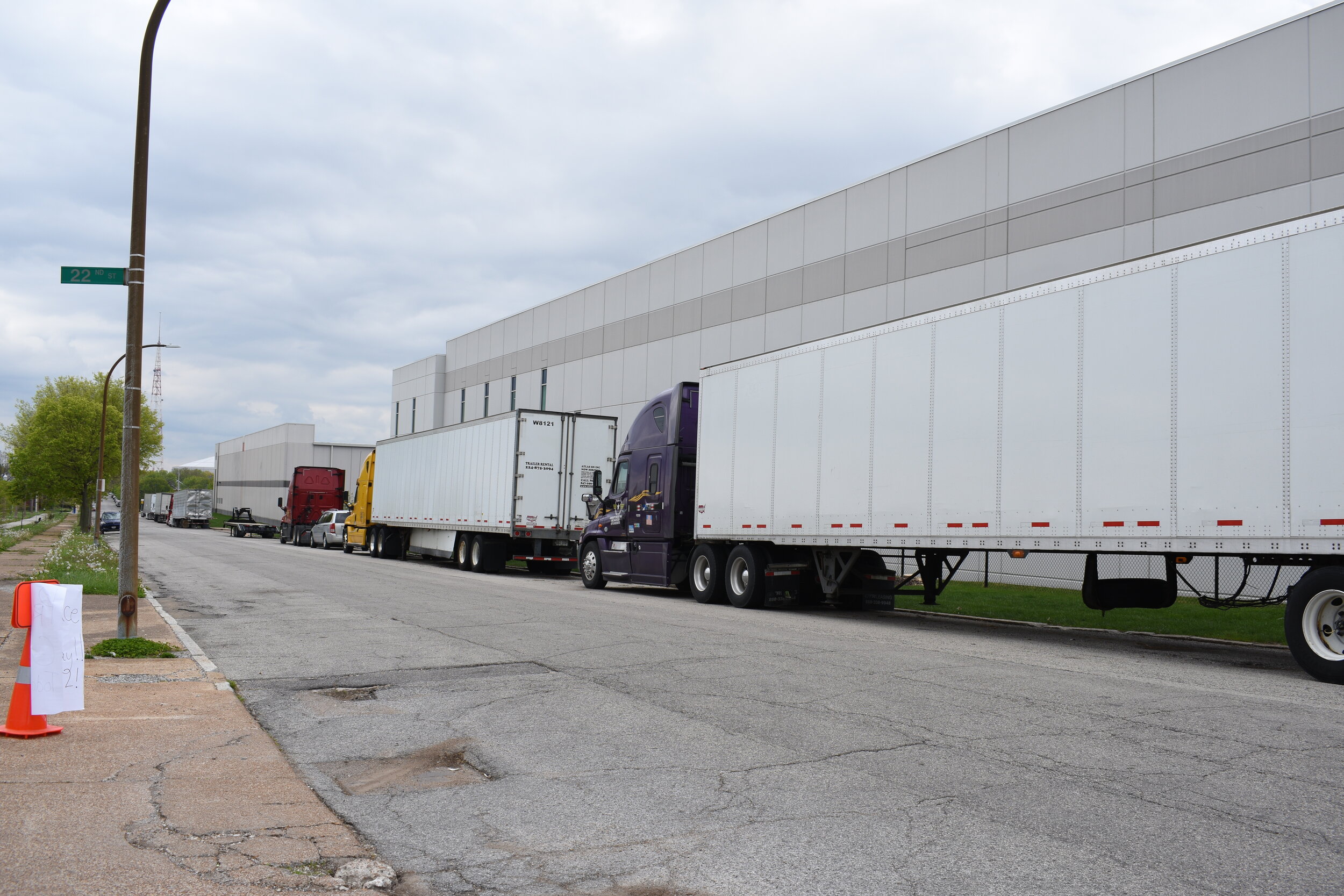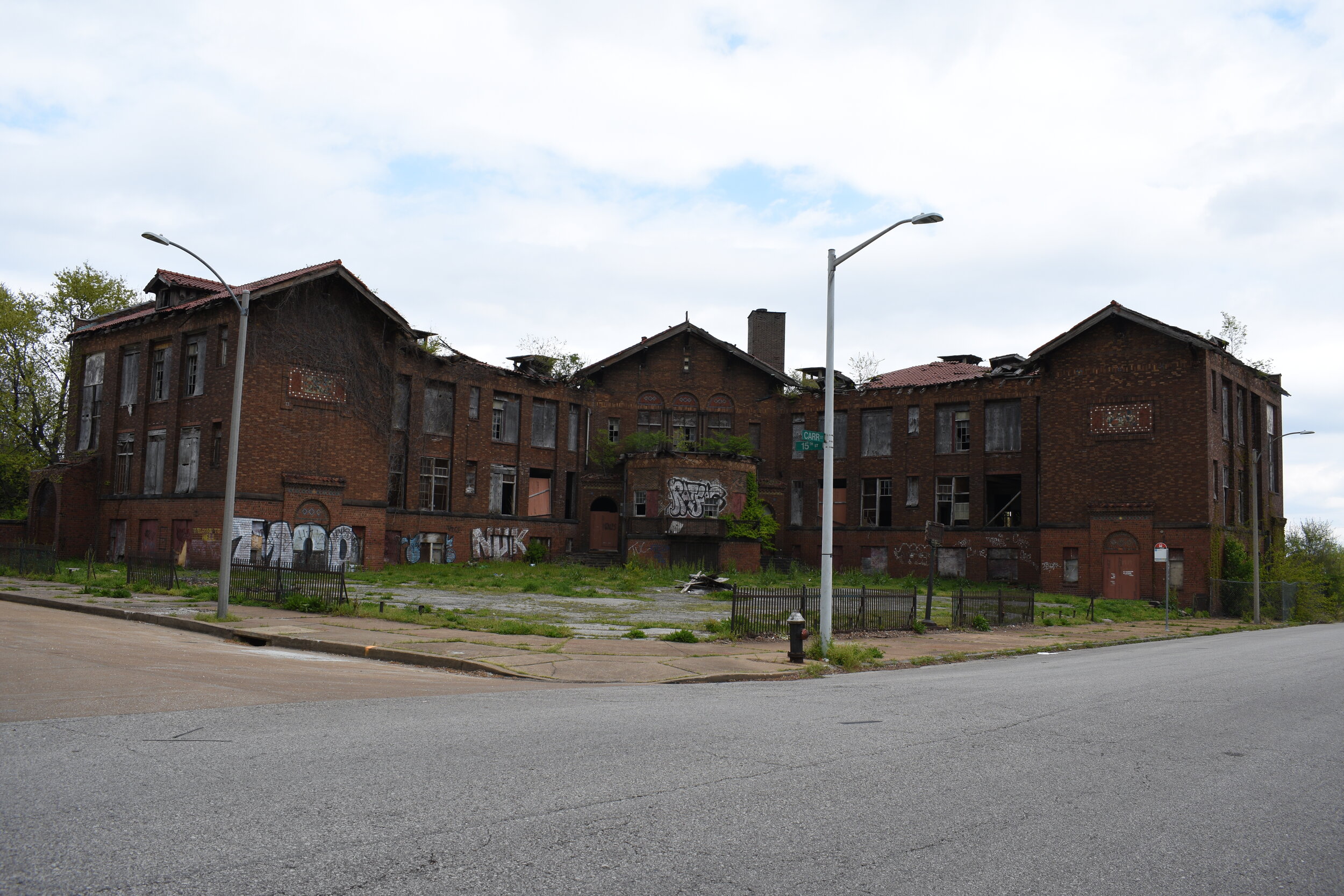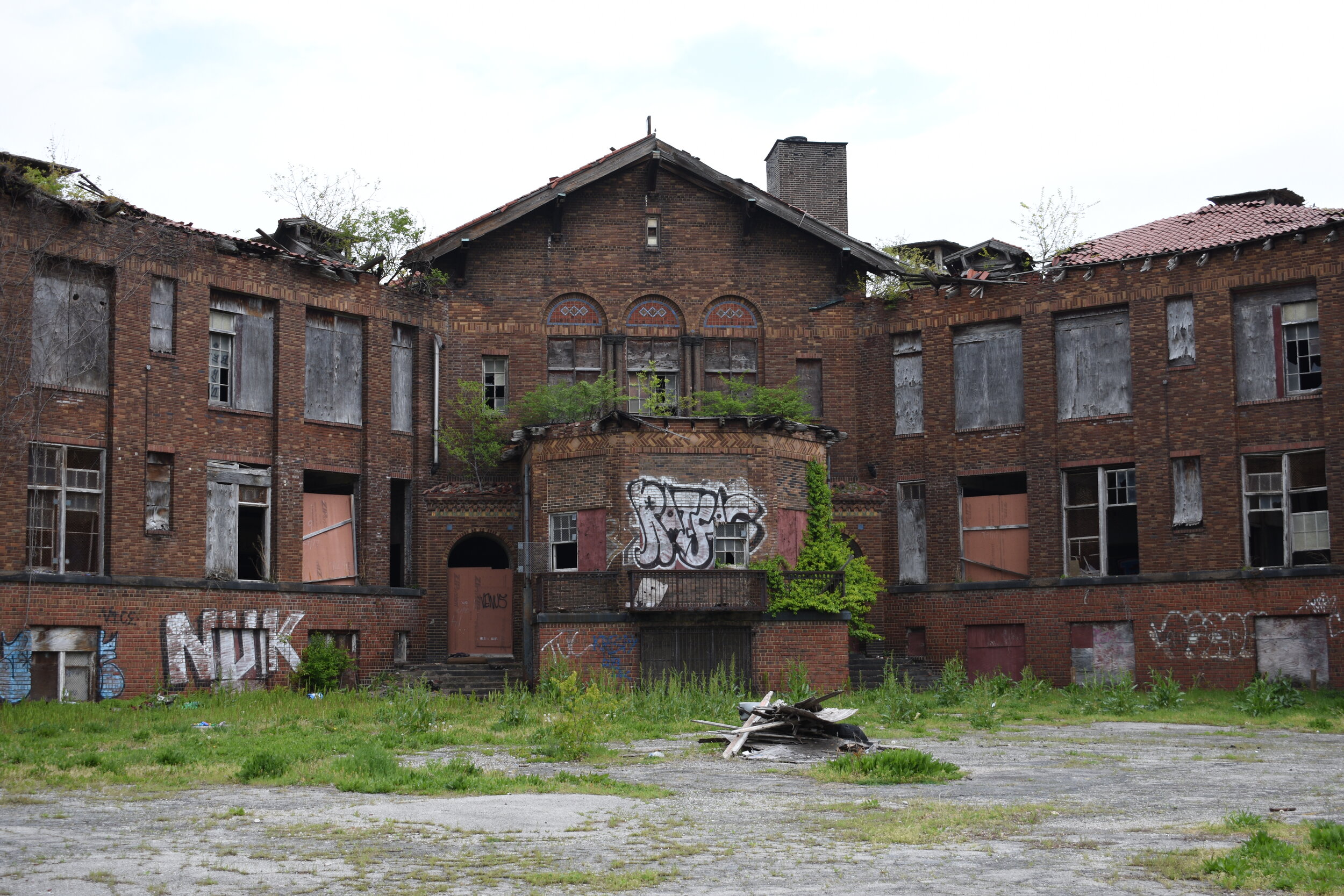The Carr Square neighborhood is located in north St. Louis. It is south of Cass, north of Cole, east of Jefferson and west of Tucker/N. 13th Street (note the boundaries in the Google map below incorrectly has Carr Street as the southern boundary, when the city officially declares Cole Street as the southern border:
Carr Square had a 19% decline in residents from 1990-2000. 98% of its 2,339 residents are black, 1% white and 1% Hispanic/Latino. There is no website for this neighborhood on the city neighborhood page.
Carr Square's 1,327 housing units are 74% occupied, 99% rented and 1% owned. Can that be right? The numbers suggest a lot of apartments and condos and no owner occupied properties. But, the stats don't lie.
Good news is the 2010 census data indicated a gain of nearly 16%! No racial shifts occurred, census counts stated it is still 98% Black. Black women outnumber Black males by 2X. Only 6% of the citizens are married, tied for the lowest marriage rate in the entire city, with Midtown and Covenant Blu/Grand Center.
This is one of those parts of town that has seen such massive disinvestment and lack of care and respect from it's inhabitants and leaders, that it is basically a wasteland. The street grid was obliterated. There are huge swaths of unused land, mainly the north west corner where Pruit-Igoe used to be, that are just jungles of weeds.
There are so few reminders of St. Louis' history here, it's disturbing. It's been leveled. It's been filled in with some good intentions, but unsustainable rental/subsidized housing that attracts very little growth potential, nor historic meaning or urban context.

There are a couple of old buildings, the Carr School being one of them. Please click on the link to see some amazing photography from Built St. Louis. Here's what is looks like today:





Here are a couple other remaining structures from our heydey:





Carr Square may have the most underutilized, open land of any city neighborhood I've seen to date. Anyone who has word/thoughts to the contrary is welcomed to speak up. This is merely my opinion.
I was recently on the roof at the City Museum and rode a ferris wheel where the cars face north toward CS; if they were pointed east or south, you would get sweeping views of Downtown and Down Town West giving you an idea of how great the city still is. But the aerial view of Carr Square helps prove my point that this area is a low density, urban wasteland with some low rise subsidized rental apartments, condos and not much else.
But the weird thing is, I had one of the best north city experiences yet in my visit to Carr Square. Firstly, my 3 year old and wife were with me today. We stopped into Kram Fish on Biddle Street to check out the retail side of the business that's been around since 1904. This place is a simple fish stand with buffalo, cat, carp, etc. They also have some frozen fish and shrimp, but no salt water fish. Nonetheless, it's a cool little place with soul.
Secondly, we knew we had to get some solid photos of St. Stanislaus Kostka. If you haven't heard of this parish, you should do some reading on the history. In short, this proud Polish-American Catholic church founded in 1847 has been fighting to retain their heritage and financial anonymity from the larger St. Louis Arch Diocese. The Catholic Arch Diocese tried to take over the finances of this church and close them down. The church has raised it's own money over the years through generous contributions of parishioners, corporations and other notables such as baseball great Stan Musial.


I've always been peripherially aware of this issue in north St. Louis, but today we were graced by the generosity and kindness of people that love their church, heritage and history more than most Catholics I've met. My wife was outside taking pictures of the church when two gentlemen approached her, and struck up a conversation. Usually when you have a camera in hand and no credentials, people are suspicious of your intentions. I assumed this was the same type of thing. Not so.
My wife came back to the car and told me that these fellas asked her if she wanted a personal tour of the inside. Sure. So we were lead on a showing and telling of the history of many pieces inside the church.
We also got some good anecdotal stories on Pruitt-Igoe (PI) and it's effect on bringing down Carr Square. But the church has remained. One interesting tidbit we mined was that the tenants of PI would shoot holes in the roof of the church. Kudos for St. Stans for not packing it up and shutting down. They took a stand, waited out the worst of times, and now have a strong parish and church once again.
Anyhow, here are some photos of the inside of the church:












We were lucky to have had this experience, as frankly there just isn't anything else going on Carr Square other than these large planned community-like (I'm assuming) subsidized apartment "complexes" complete with a neighborhood center and strip malls providing some junk food and services to the locals.





These parts of St. Louis are in the NorthSide plans of suburban developer Paul McKee. I think we should look forward to any investment in this part of town. Here's the St. Louis Post-Dispatch map that shows the proposed phases and investment dollars of the NorthSide plan. The red circle highlights the area that includes Carr Square:

This part of town is in dire need of some investment, and being that it abuts Downtown West, it will be an important gateway neighborhood to the north side. If McKee, etc. can come up with a contemporary, urban, mixed use, sustainable plan for redevelopment, this could be one of the greatest improvements in the city's long history.
***In April, 2021 I revisited the neighborhood and the following includes updated commentary and photos.***
Misses On Original Tour
Well, this one was pretty terrible. I had a much different perspective on St. Louis back then. I’ve learned a lot and wouldn’t have let a bad day cloud my take on a place. I will try to do a better job now that I am way more comfortable doing this stuff, and try to respect the people that live here. Our experience was clouded by the fact that we spent a lot of time with some St. Stanislaus Kostka parishioners and heard some great stories of the neighborhood as well as some pretty depressing stories of the recent decline and current state of disinvestment in the neighborhood they described. It was heartbreaking and sometimes that raw feeling translated right into the post. There is a lot of dysfunction in some parts of St. Louis and we both felt it that particular day.
So, we spent more time than ever expected at St. Stanislaus and didn’t have the time to correctly cover the rest of what is there. Back then we were rolling with little ones in the car and sometimes, you just gotta go.
I’ll attempt fix that here.
But make no mistake, this part of the city, which was largely way outdated/slum housing for immigrants was leveled for Pruitt-Igoe and other public housing ideals of the mid 20th Century. That failed experiment, no matter how good intentioned, has all been leveled now, as has most of the historic stock around it.
One reminder of the PI highly populated days of the 1960s is the Crunden Branch library, built in 1959 for PI residents and surrounding neighborhoods. It only lasted ~20 years, as it closed, along with two other libraries, under extreme pressures of mass exodus of population and property values plummeting. It is now owned by a church.
Contrast the black and white photos below (credit: State Historical Society of Missouri / Research Center-St. Louis Photo Database) that shows the neighborhood once had amazing buildings across Cass Avenue and the towers of PI in the background…all gone. Today you see vacant swaths of nothingness.
Crunden Branch - 2008 Cass Avenue -operational 1959-1981
I missed several of the schools, of which there are many. In fact, I’ve never seen a neighborhood with such few people and so many schools concentrated in one area.
The former Pruitt School, built for PI residents in 1954 / 1955, closed in 1974 as a full time school, but hung around in the St. Louis Public School system with one use or another until 2007. It became a charter school in 2015. It now appears to be a Kipp Charter School (grades 5-8, 96% Black student population). There was a food giveaway the day I visited.
The photo to the right, sourced from the Missouri Historical Society collection, shows the projects in the background.
These schools were meant to be within walking distance of PI and Vaughn projects, but that didn’t work out and now these schools are totally auto-centric.
There is another charter school called LaSalle Middle School (98% Black student population). I was part of mentoring program here for a few years, and the physical investment in these schools is jaw dropping. As an SLPS parent, we can only dream.
La Salle Charter School - 1106 N. Jefferson
Jefferson School (100% Black student population), Carr Lane Visual and Performing Arts (96% Black student population) and Gateway (93% Black student population) are in the St. Louis Public School system.
There are only a handful of operating businesses open to the public, including a great lumber yard.
After a more thorough assessment of the housing, it is pretty well cared for and has sidewalks, maturing street trees and, for modern buildings, looks pretty solid. The street grid is not at all in tact, giving it a suburban feel.
If you are a fan of affordable housing, Carr Square will be your paradise. Here are some pics to show how it looks today.
Noticeable Changes
The city website added a page for Carr Square in the last ten years, good for them. I included the new link and some history.
“Carr Square historically provided housing for successive waves of immigrants to the area. German Protestants first inhabited the area, settling around Carr Square itself. About 1842, a group of Irish immigrants from County Kerry settled to the northeast near 18th Street and O’Fallon, an area that later became known as “Kerry Patch.” The Irish immigrants built one-room shacks, claiming the land as squatter’s rights. Fortunately, an empathetic party, the Mullaphy, family owned much of the land and accepted their presence. After 1870, growing numbers of Polish immigrants made their home in “Kerry Patch,” supplanting the Irish. By the 1880s, many German Protestants made an outward migration from Carr Square, succeeded in the area by Orthodox Jews. By 1920, the communities north and west of downtown assumed a polyglot character of mixed nationalities, including immigrants from Russia and the Balkan countries.
The depression and World War II brought large numbers of African-American migrants to the central portions of the city. They came in search of a better existence from rural areas of the South. For most, however, their new urban home came with harsh realities. They often lived in decrepit buildings erected before the days of indoor plumbing and central heating, many of which had been “remodeled” by landlords into even smaller units. It was partially in response to such overcrowded and unsanitary housing conditions that public housing emerged.
Carr Square and adjacent Columbus Square became testing grounds of public housing projects for St. Louis and for the country as a whole. The earliest housing project in the neighborhood was Carr Square Village, a low-rise development built in 1942 for poor, largely migrant African Americans. Nonetheless, the area became better known for the leviathan Pruitt-Igoe, begun in 1954. With the urban renewal slum-clearance—by some called “Negro-removal”—of Mill Creek Valley, 35 high-rise towers were built to house the large group of African Americans displaced. Also during this time period, when modern high-rise public housing projects were in vogue, Vaughn Family Apartments was built to the east of Pruitt-Igoe. In contrast to the glut of negative connotations surrounding high-rise housing projects today, it is useful to remember some of the ethos surrounding these projects. By modernizing the conditions of the poorest dwellers, urban planners hoped the lives of people might change. Nevertheless, the lives of people who were moved into Pruitt-Igoe did not change for the better; the condition of the housing project changed for the worst. Pruitt-Igoe was memorialized in history as the ultimate modernist failure with its implosion in 1976.
With the destruction of what had been one of the earliest and largest high-rise housing projects in the country, the movement away from large high-rise public housing began. By the 1980s, the same projects noted for their progressive vision became known for crime, drug wars, and poor conditions. Nevertheless, during this same period of disillusionment, another model for public housing arose. Carr Square Village became one of the first public housing projects to convert from management by the Local Housing Authority to a program of tenant management.”
The history of racial and ethnic diversity is now long gone as the neighborhood is nearly 100% Black. Of the 2,774 people counted here in 2010, only 15 were Hispanic/Latino, 14 white and 2 Asian. No racial integration exists here. I hope to see this change in the 2020 count, but won’t count on it.
Two fantastic articles from local historian Chris Naffziger were published in St. Louis Magazine. These are essential reading to understand how Carr Square has changed over the years.
St. Louis' "Good Old Days" Were Actually Kind of Terrible - Chris Naffziger - August, 2016
What happened to Carr Square? - Chris Naffziger - December, 2020
There is a new early childhood development facility called Flance Early Learning Center. City records indicate the building is owned by the St. Louis Housing Authority. A positive need now met.
1908 O’Fallon Street
There is a massive renovation of the Preservation Square section of the neighborhood. I did a story below in the additional reading section. The work is underway and you can start to envision the outcome. It is much welcomed per the three folks I spoke to on my visit.
The suburban slumlord dreams of Paul McKee have not played out. But, the $1.75B NGA West campus (which will be a protected, isolated suburban campus just north of Carr Square, will provide opportunity to rebuild the city around it. If the neighbors want suburban, low productive new development uses, that’s what we’ll all have to swallow.
I’m not overly hopeful, but am ready to be proved wrong.
The current development evidence, and peak into the future, for this area is the construction of the 3-bed urgent care facility called Homer G. Phillips hospital right along Jefferson. Get ready for sprawling suburban designs. I think this is the desired outcome.
The maturing street trees, new sidewalks and such are really nice and make the place look really welcoming for pedestrians.
I have debated whether or not to bring this up or not, but I’m gonna. The lack of police and law enforcement efforts around dangerous driving is coming to a breaking point. If you are on a two-wheeled vehicle, like I was, watch out. The no-dignity, hateful driving is aggressive beyond belief. If you are a fan of Dodge Challenger spinouts and 40 mph + down residential streets, with no regard for stop signs is your thing, you will be at home here.
The suburban cul-de-sacs make the perfect spot for bro driving and showing off.
If the neighbors want a dignified place of living, they are the ones who will have to demand it. Otherwise, it’ll be as dangerous as you can imagine for people on foot, bikes or scooters.
I’m really happy to see Murphy Park well cared for, adding some colorful murals. From a design standpoint, this park is a jewel.
What Are The Future Needs?
Try to aim toward a mixed use neighborhood again. An integrated, income diversee populous is the ideal, but I’m not so naive to think this will happen in my lifetime.
A demand from within will have to be made for more than liquor stores and junk food.
The trucking and warehouse/distribution businesses, while providing jobs, are not kind on the eyes. I dream of a city plan to retain these operations, but moving them to non-residential neighborhoods like North and Near North Riverfront, Kosciusko, etc.
St. Stanislaus is a treasure, for sure. But, the sprawling property is surrounded by fence and has that “stay out” feel. Kinda like, “this is our fort, not part of your neighborhood”, kind of thing. Get rid of the fences, build housing close to it and run it as a non-profit. I’m going to get flamed for this, I know…but, it’s how I feel.
The suburban mindset has to be held back. The strip malls are already there, and I fear more are on the way.
I once thought Carr School would be saved, but I’m losing hope.
There is a tremendous amount of public tax money being pumped into Carr Square and the surrounding neighborhoods. I am eternally hopeful, but there is need here for mixing, de-segregation and new ideas.
Additional St. Louis City Talk Reading
Loretta Hill Park - February, 2014
Preservation Square - Carr Square Neighborhood - December, 2019

